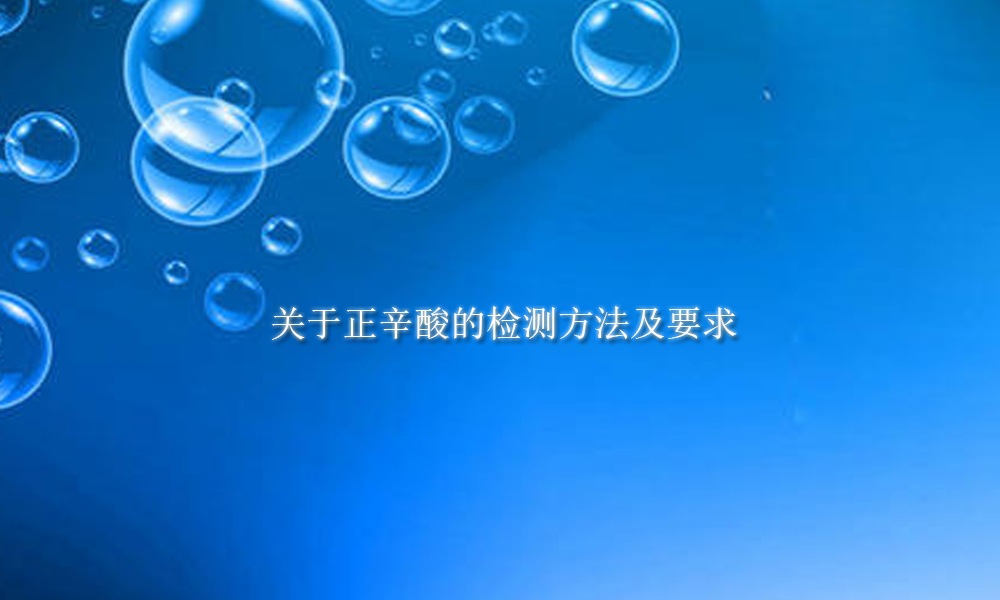
N-octanoic acid is a colorless and transparent liquid. Relative density 0.908. The melting point is 16.5℃, the boiling point is 237℃, the refractive index is 1.4285, and the flash point is 106℃. Slightly soluble in hot water, soluble in most organic solvents, such as ethanol, ether, chloroform, benzene, carbon disulfide, petroleum ether and glacial acetic acid.
The detection methods and requirements for n-octanoic acid are as follows:
1. Clarity and color of the solution:
Take 5.0g of this product, add 50ml of water to dissolve it, and check according to the law (General Chapter 0901 and General Chapter 0902). The solution should be clear and colorless; if it develops color, Compared with the yellow No. 3 standard colorimetric liquid (General Rule 0901 Method 1), it must not be darker.
2. Related substances:
Take about 0.1g of this product, add ethyl acetate to dissolve and dilute 10ml, as a test product solution; accurately measure an appropriate amount and quantitatively dilute it with ethyl acetate to prepare a solution containing approximately 10Mg of octanoic acid per 1 ml as a control solution. Also weigh about 0.1g of the caprylic acid reference substance, add ethyl acetate to dissolve and dilute 10ml, and use it as the reference substance solution. According to the gas chromatography (General Chapter 0521) test, the capillary column with 2-nitroterephthalic acid modified polyethylene glycol 20M as the stationary liquid is the chromatographic column (30m×0.25mm IDXO.Mjum); the starting temperature is 100x: , maintain for 1 minute, then raise the temperature to 220°C at a rate of 5°C per minute, and maintain for 20 minutes; the inlet temperature is 250T; the detector temperature is 25CTC; take 1/Ltl each of the test solution and the control solution , were injected into the gas chromatograph, and the chromatogram was recorded. The signal-to-noise ratio of the control solution should not be less than 5; calculated according to the area normalization method, a single impurity in the chromatogram of the test solution should not exceed 0.3%, and the total impurities should not exceed 0.5%. Any chromatogram of the test solution should be less than that of the control. The impurity peak that is 0.5 times the area of the main peak of octanoic acid in the solution can be ignored.
3. Moisture:
Take this product and measure it according to the moisture determination method (General Chapter 0832 Method 1). The moisture content must not be over 0.7%.
4. Residue on ignition:
Take 1.0g of this product and inspect it in accordance with the law (General Rule 0841). The remaining residue must not pass 0.1%.
5. Heavy metals:
Take about 1.2g of this product, dissolve it in ethanol and dilute it to 25ml as the test solution. Inspect according to law (General Principle 0821 Law 1), and the heavy metal content shall not exceed 10 parts per million.
6. Content determination:
Take about 0.125g of this product, weigh it accurately, add 25ml of ethanol to dissolve it, and perform potentiometric titration. Method (General Chapter 0701), titrate with sodium hydroxide titrant (0.1mol/L), and correct the titration results with a blank test. Each lml of sodium hydroxide titrant (0.lmol/L) is equivalent to 14.42mg of C8H1602.

 微信扫一扫打赏
微信扫一扫打赏

